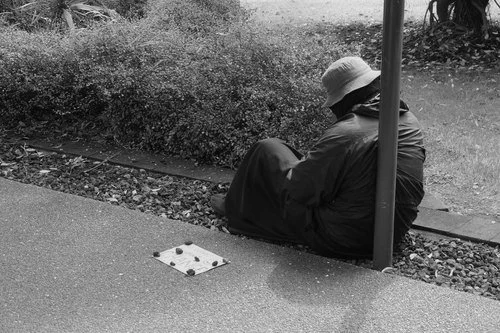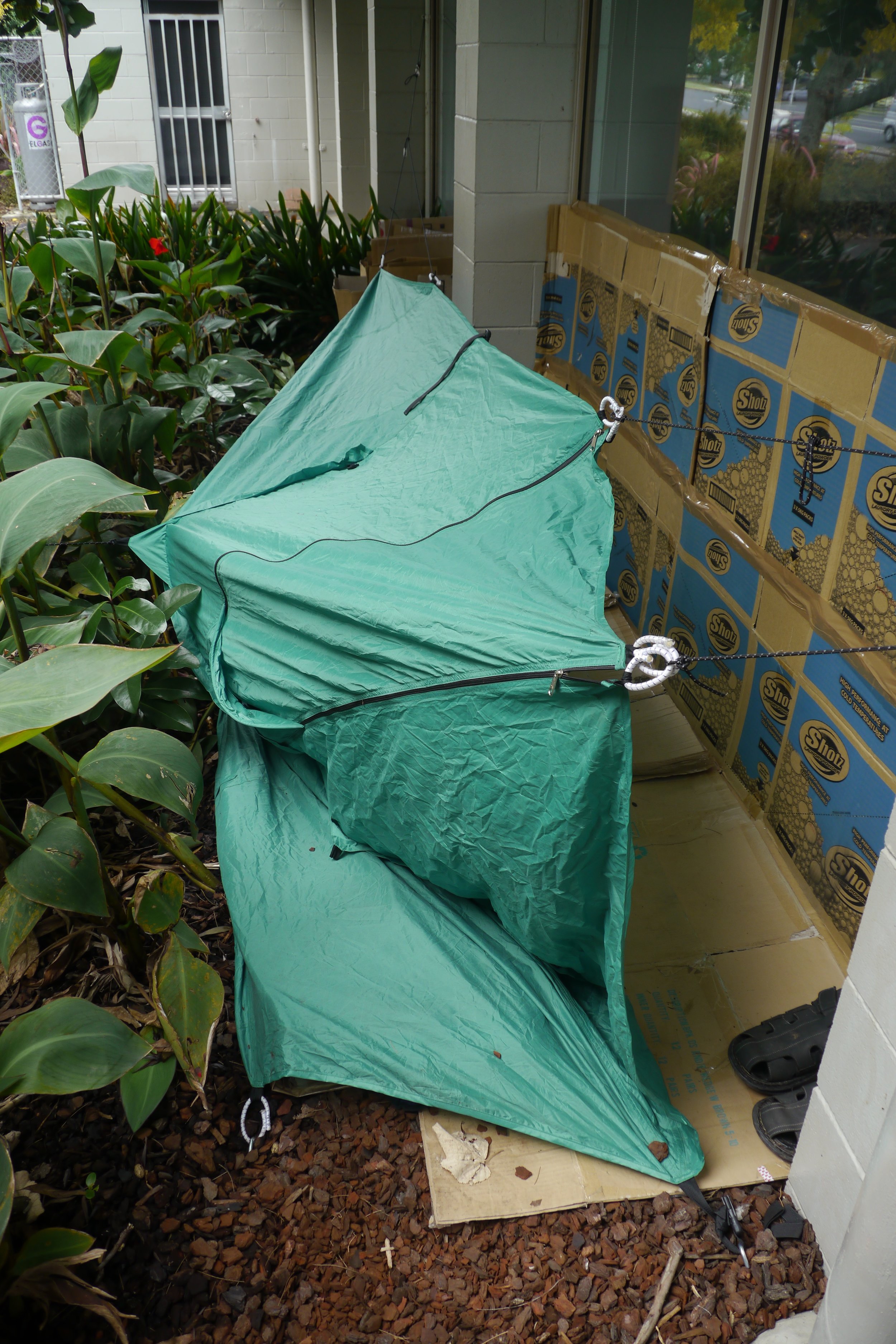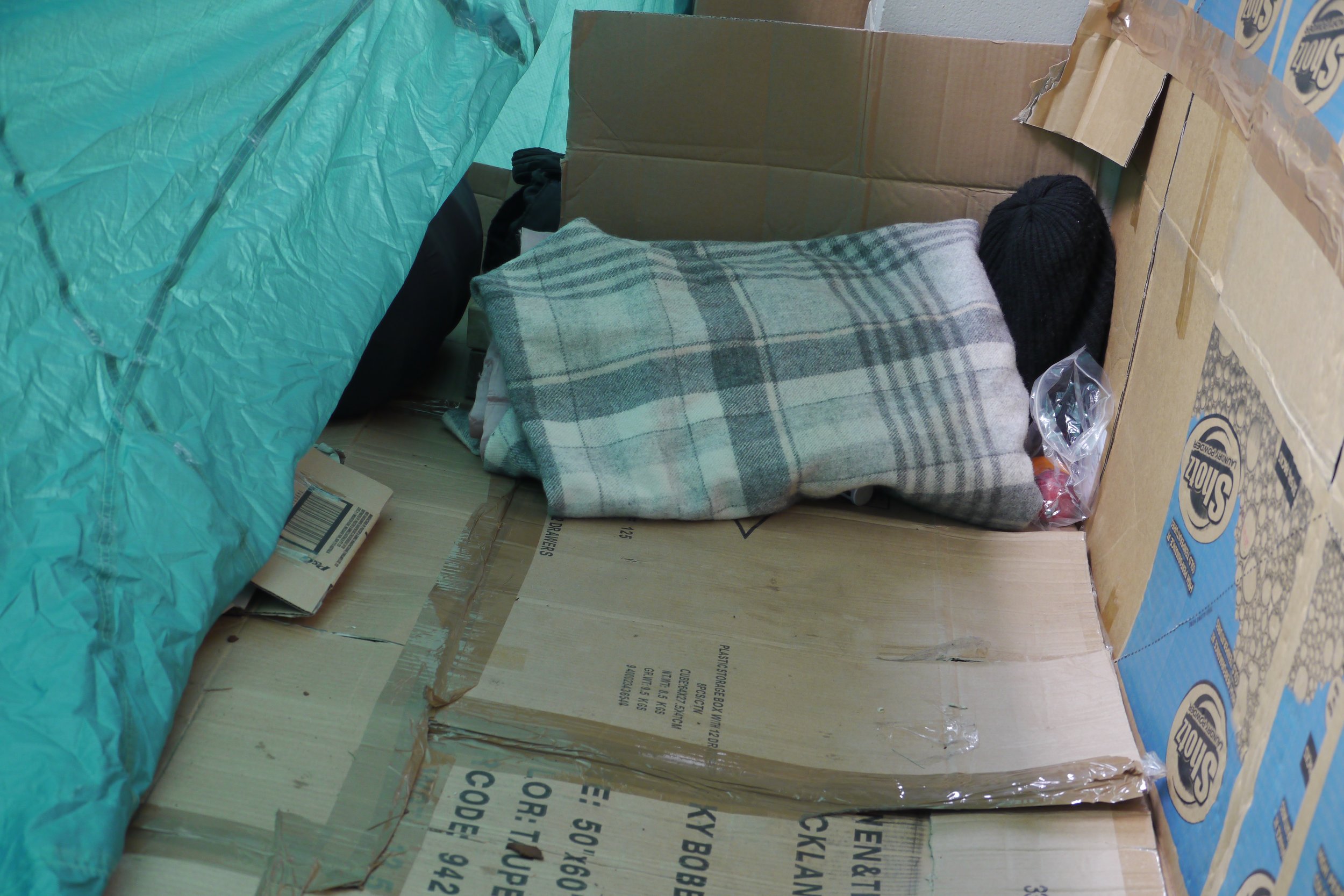What do you mean, we?
03 March 2012 - 06 May 2012
Elizabeth Axtman // Newell Harry // Amanda Heng // Rangituhia Hollis // Thomas Johnson // Simone Aaberg Kærn // Ayanah Moor // Colin Nairn // Kalisolaite ‘Uhila // Boat-people.org
Curated by Bruce E. Phillips
‘What do you mean, we? sought to confront issues of discrimination in Tāmaki Makaurau Auckland, within a global context. The exhibition also aimed to highlight the innovative strategies – from writing love letters to flying across war zones; and from sleeping rough to biting high-heeled shoes – used by artists to address the psychology of prejudice. These practices and their political relevance attracted media attention and had a lasting impact on the exhibiting artists and local communities.
Live and documented performance featured prominently in What do you mean, we?In his video monologue, Tom Johnson self-analysed his white privilege to disclose unconscious racial bias. Amanda Heng’s video works showed herself and other women walking backwards on city streets in Fukuoka, Jakarta, San Sebastian and Singapore, while biting high-heeled shoes in response to workplace sexism and global gender income inequality. As a protest against the Australian government’s imprisonment of asylum seekers, artist collective boat-people.org and participants wrapped their heads in the national flag and stood silently in city plazas.
The importance of a lived understanding of prejudice, over time, was emphasised in performative actions by Kalisolaite ‘Uhila and Simone Aaberg Kærn. ‘Uhila lived as if homeless for two-weeks outside Te Tuhi and was entirely reliant on donated food to survive. His harmless loitering attracted acts of kindness and hatred from the public; the work was concluded early due to pressure from police officers. By risking her life over an even longer duration, Kærn flew a small airplane 6000 kilometres, from Copenhagen to Kabul, to answer the dreams of a young Afghani woman who aspired to become a fighter pilot. Kærn’s documentary-style video chronicled her journey and revealed the fraught motivations of the mission.
In other works, language was appropriated to reveal telling slippages or blatant injustice. Ayanah Moor’s audio work recited, in a polite tone, the chauvinistic language of an African American men’s magazine. In a video by Colin Nairn, institutionalised discrimination and violence was exposed by scrolling through the anti-homosexual legislation from 79 countries. Elizabeth Axtman’s video narrates two letters in an effort to confront hate speech and racial polarisation in the US. The first was one of 200 racist letters written by convict David Tuason and sent to black men in relationships with white women, the second a letter of love and compassion written by Axtman appealing to Tuason to see reason.
The semiotics of colonialism were alluded to in Newell Harry’s neon work which compressed the statement ‘THENATIVESARERESTLESS’ and periodically flashed to spell out ‘… AR ... S ... ES …’. Aspects of colonisation were also addressed by Rangituhia Hollis in his video work featuring mangō-pare (hammerhead sharks) encircling Te Pane o Mataaho (Māngere Mountain). Here, Hollis inserts symbols of resilience presiding over historic trauma and the current injustices of life in Tāmaki Makaurau Auckland’s urban environment.
Addressing Tāmaki Makaurau Auckland’s colonial past and iniquitous present was a driving motivation for the curation of What do you mean, we? The curatorial research included investigating a number of local incidents such as the 2004 arson attack of a local whare and the concerted political and public opposition to its reconstruction, and the distribution of ‘Asian Invasion’ pamphlets throughout Pakuranga in 2011 by white supremacist organisation the Right Wing Resistance. In the national context, the 2011 and 2012 period of the exhibition’s development bore witness to a number of controversies involving racist and sexist commentary from media personalities and politicians. To help grapple with the complexities of this context writers Fear Brampton, Danny Butt and Melissa Laing were invited to contribute exhibition essays. These essays introduced audiences to the exhibition as well as offering various perspectives beyond a singular curatorial voice.
The political relevance of What do you mean, we? also attracted mainstream TV and newspaper coverage and acknowledgement from the New Zealand Human Rights Commission. Subsequently, What do you mean, we? continued to have an influence on the exhibited artists and the region’s cultural history. Rangituhia Hollis’ work Kia mate mangō-pare, for instance, was later exhibited at The Suter Art Gallery Te Aratoi o Whakatu and was acquired for the collection of Auckland Art Gallery Toi o Tāmaki.
Kalisolaite ‘Uhila’s performance work Mo‘ui tukuhausia received acclaim as well as critique, media attention, and polarised public opinion. In 2014, Mo‘ui tukuhausiawas nominated and reperformed for Auckland Art Gallery's Walters Prize. ‘Uhila’s work was also nominated for the 2017 International Award for Public Art and has been featured in publications such as The Routledge Companion to Theatre and Politics, and This Model World by Anthony Byrt.
Further information on What do you mean, we? can be found in the free to read e-book which includes essays, exhibition documentation, an interview with Kalisolaite ‘Uhila, and details of exhibited works.’
Press:
Janet McAllister, NZ Herald on Kalisolaite Uhila
95bfm interview curator Bruce E. Phillips
John Hurrell, Eye Contact - Part one & Part two
Additional press on Kalisolaite 'Uhila's 2014 Walters Prize nomination:
Radio New Zealand National, 6 July 2014; Nina Tonga, Off the Wall, Te Papa blog; Bruce E. Phillips, Outpost, Auckland Art Gallery blog; Terrence Handscomb, Eyecontact; Emma Jameson, Eyecontact; Natasha Matila-Smith, Eyecontact; Scott Hamilton, Eyecontact; Review by Mark Amery, The Big Idea






























